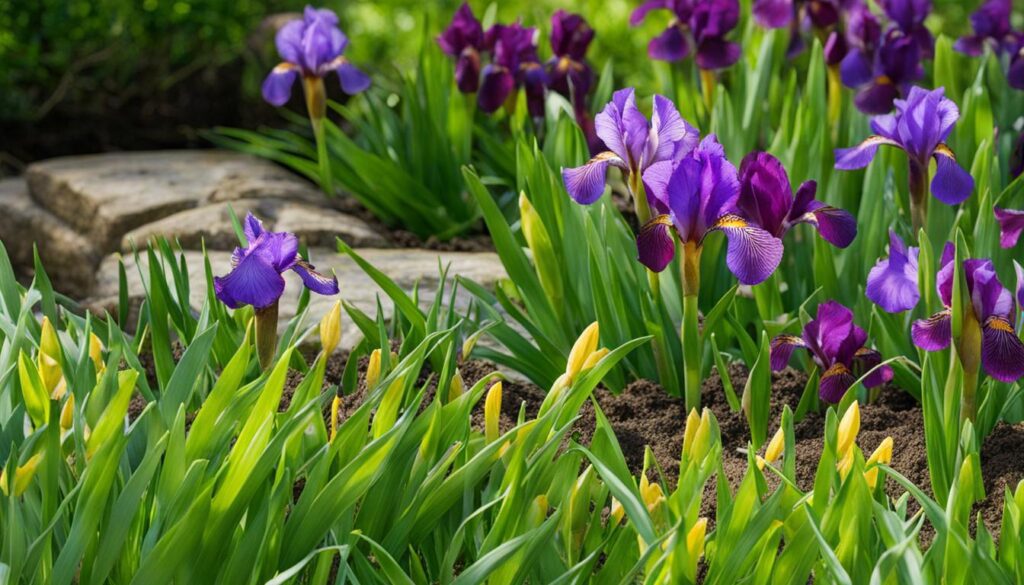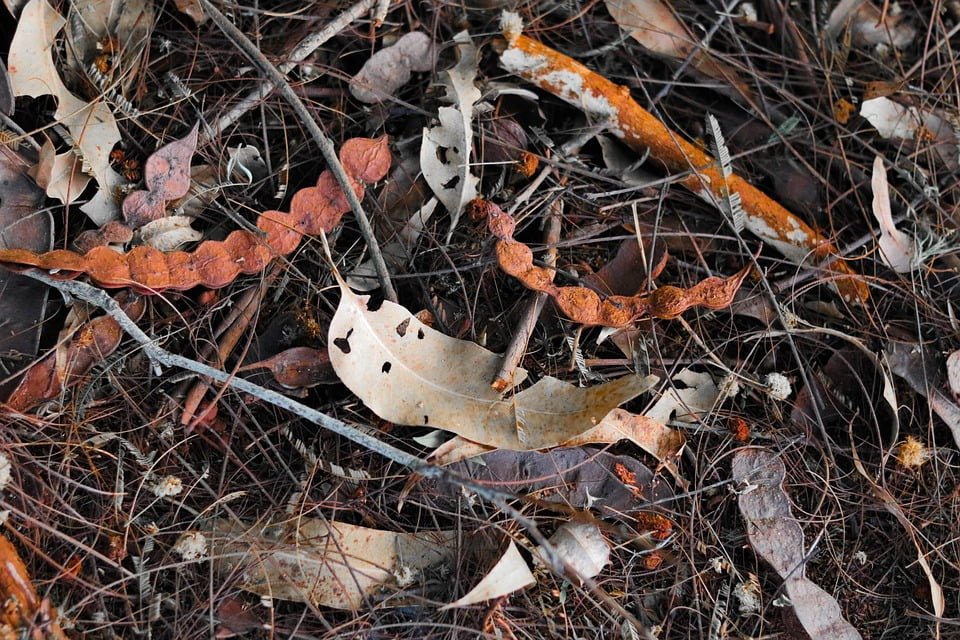Are you wondering if it’s possible to transplant iris in the spring? While the best time to divide and transplant irises is in late summer or early fall, you can still relocate them in the spring if needed. However, keep in mind that if you choose to transplant irises now, they may not bloom this spring.
To successfully transplant irises in the spring, start by removing the entire iris clump and reducing the length of the blade foliage. Discard any damaged or pithy rhizomes and separate the remaining portions that have stems. Prepare the planting site by digging the soil and incorporating compost to improve its fertility. Plant the rhizomes with the stems facing outward and just barely under the soil surface. It’s important to ensure that the newly planted iris rhizomes are thoroughly watered.
While transplanting irises in the spring may not guarantee blooms this season, it can still be a successful relocation if done correctly. Follow these steps to give your irises the best chance to thrive in their new location.
How to Divide Iris in Spring
Dividing iris in the spring is a great way to thin overcrowded clumps that were missed in the previous summer and fall. Although the optimal time to divide iris is after they have bloomed, dividing them in the spring can still result in beautiful blooms. Here’s how you can successfully divide your bearded iris:
- Locate the center of the iris clump.
- Follow the rhizomes outward.
- Use a garden knife to cut the rhizome where it attaches to the mother rhizome.
- Dig up the freed rhizomes, leaving the rest undisturbed in the ground.
- Replant the divisions in a shallow hole.
- Mix bulb fertilizer into the soil.
It’s important to note that if the newly planted divisions do not bloom this year, they will most likely bloom the following year. Remember to water your newly divided iris to ensure their healthy growth and development.
Enjoy Season After Season of Color by Replanting Irises
Irises are renowned for their vibrant and captivating blooms, adorning gardens with a kaleidoscope of colors. To ensure your irises continue to flourish and bring joy year after year, it’s crucial to know the optimal time for replanting these beautiful flowers.
The ideal time for replanting iris bulbs varies depending on the specific variety. For bearded irises, which grow from rhizomes, the recommended period is after blooming in late spring. Begin by cutting back the leaves and dividing the rhizomes, ensuring that each new piece retains a leaf. Plant the divisions with the top of the rhizome positioned just above the soil’s surface. This careful process will help rejuvenate your bearded irises, paving the way for future abundant blooms.
If you have dwarf irises, which grow from small bulbs, it’s advisable to replant them in early fall. Wait for the foliage to die back, then dig up the bulbs, separating them and discarding any damaged ones. Choose a sunny and well-drained spot for their new home. By following this procedure, you’ll ensure that your dwarf irises have the best conditions for successful growth and enchanting displays of color.
As for Dutch irises, they can be treated as annual bulbs but also possess the capability to naturalize if planted in the right location. For optimal results, wait until the foliage has died back in early fall. Dig up the bulbs, separate them, and replant them in soil enriched with compost. By providing Dutch irises with these conducive conditions, you’ll pave the way for their naturalization and the emergence of breathtaking blooms.
Is There Any Risk of Transplanting Iris in the Presence of Green Bean Diseases?
When considering transplanting iris in the presence of green bean diseases, it’s important to carefully assess the risk. Consult agricultural experts for guidance on disease prevention. Studying pictures of green bean diseases can help identify potential risks before transplantation to ensure the health of your plants.










